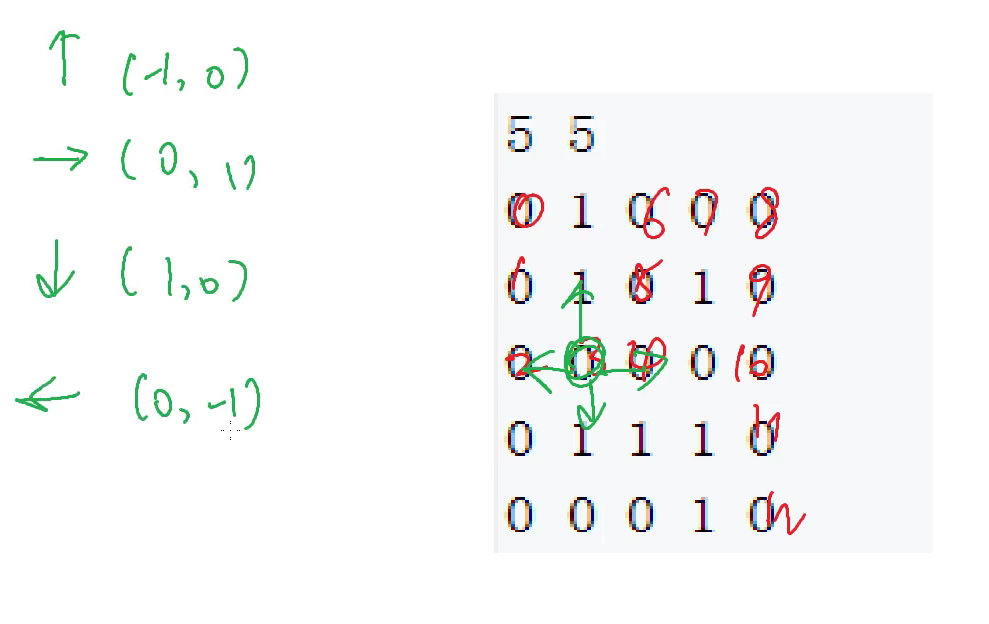C++
\color{#cc33ff}{— > 算法基础课题解}
思路:
BFS
BFS(宽度优先搜索):一个比较稳重的人,每次只会扩展一层

bfs所走的路径:
#include <iostream>
#include <algorithm>
#include <cstring>
//#include <queue>
using namespace std;
const int N = 110;
typedef pair<int, int> pii;
int n, m;
int g[N][N]; // 存储输入的二维数组
int d[N][N]; // 存储每一个点到起点的距离
pii q[N * N], Prev[N][N]; // Prev:存储路径
int bfs() {
int hh = 0, tt = 0; // 定义队头,队尾
q[0] = {0, 0};
memset(d, -1, sizeof d); // 初始化,把所有点初始化为-1,表示这个点还没被走过
d[0][0] = 0; // 已经走过
int dx[4] = {-1, 0, 1, 0}, dy[4] = {0, 1, 0, -1};
while (hh <= tt) { //队列不空
auto t = q[hh ++]; // 每次取出队头元素
for (int i = 0; i < 4; i ++) { // 每一次,枚举四个方向
int x = t.first + dx[i], y = t.second + dy[i];
//如果此时的这个点没有超出边界并且这个点可以走并且这个点还没有被走过
if (x >= 0 && x < n && y >= 0 && y < m && g[x][y] == 0 && d[x][y] == -1) {
d[x][y] = d[t.first][t.second] + 1;
//Prev[x][y] = t;
q[++ tt] = {x, y}; // 把这个点加入队列中
}
}
}
// 记录路径,倒着往前推
// int x = n - 1, y = m - 1;
// while (x || y) {
// cout << x << ' ' << y << endl;
// auto t = Prev[x][y];
// x = t.first, y = t.second;
// }
return d[n - 1][m - 1];
}
int main() {
cin >> n >> m;
for (int i = 0; i < n; i ++)
for (int j = 0; j < m; j ++)
cin >> g[i][j];
cout << bfs();
return 0;
}

